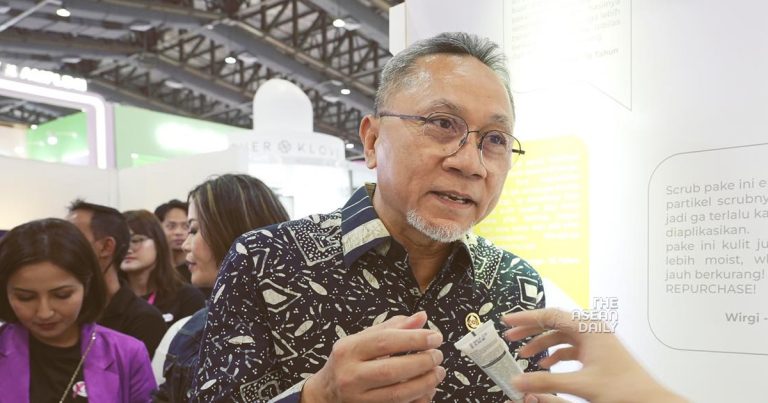12-8-2023 (JAKARTA) As the Association of Southeast Asian Nations (ASEAN) strives to solidify its standing as a hub of economic dynamism, Trade Minister Zulkifli Hasan emphasized the imperative of realizing its vision of evolving into a unified single market. In a recent statement, Minister Hasan articulated the significance of this transformation in propelling ASEAN’s economic prowess and positioning it as a pivotal epicenter of global growth.
Minister Hasan’s call for a united market resonates with Indonesia’s vision, particularly as it holds the ASEAN chairmanship in 2023, exemplifying the collective aspiration of the member nations. His remarks coincide with the upcoming 55th ASEAN Economic Ministers’ Meeting and Related Meeting, scheduled to convene in Semarang, Central Java, from August 17 to 22, 2023.
Highlighting ASEAN’s current trajectory of robust economic expansion, Minister Hasan underscored the opportunity to further amplify this momentum and elevate ASEAN’s status as a thriving engine of prosperity.
The establishment of the ASEAN Economic Community (AEC) serves as a pivotal stepping stone towards the vision of a cohesive single market and production base characterized by the seamless flow of goods, services, investments, capital, and skills. This unified approach is envisioned to streamline trade, facilitate cross-border investments, and foster a more dynamic business environment.
Presently positioned as the world’s fifth-largest economy, ASEAN has demonstrated remarkable progress since its inception in 1967, trailing only the United States, China, India, and Germany. Over the years, the region’s economic landscape has undergone significant transformation, solidifying its role as a pivotal player on the global stage.
Reflecting on this evolution, it is evident that ASEAN’s growth has been staggering. In 1967, the gross domestic product (GDP) per capita was a mere US$122, a figure that has surged to an impressive US$5,248 in 2021. This astonishing ascent showcases the region’s ability to nurture economic development and enhance the well-being of its citizens.
The trajectory of foreign direct investment (FDI) reveals a similar narrative of expansion and allure. Marking a tremendous leap from US$3.04 billion in 1967 to a staggering US$168.2 billion in 2021, ASEAN has become an investment magnet, attracting capital from across the globe. The parallel surge in total trade volume is equally impressive, catapulting from US$10 billion to an astonishing US$2,591 billion, highlighting the region’s prominence in the global trade landscape.
The dynamic growth of ASEAN isn’t solely confined to economic indicators. The region’s human capital has undergone remarkable development, shaping the future workforce. Since its inception, ASEAN’s population has surged from 185 million in 1967 to a substantial 673.8 million in 2021. The digital era’s influence is also evident, with over 61.14% of this population proficient in utilizing the internet, reflecting the embrace of modern technological advancements.
As ASEAN aspires to solidify its identity as a unified economic entity, Minister Hasan’s vision aligns with the broader ambition of propelling the region to unprecedented heights. The forthcoming ASEAN Economic Ministers’ Meeting serves as a platform to harness this collective momentum, steering the course towards a single market that fosters cross-border collaboration, accelerates growth, and enhances the overall quality of life for the people of ASEAN.




